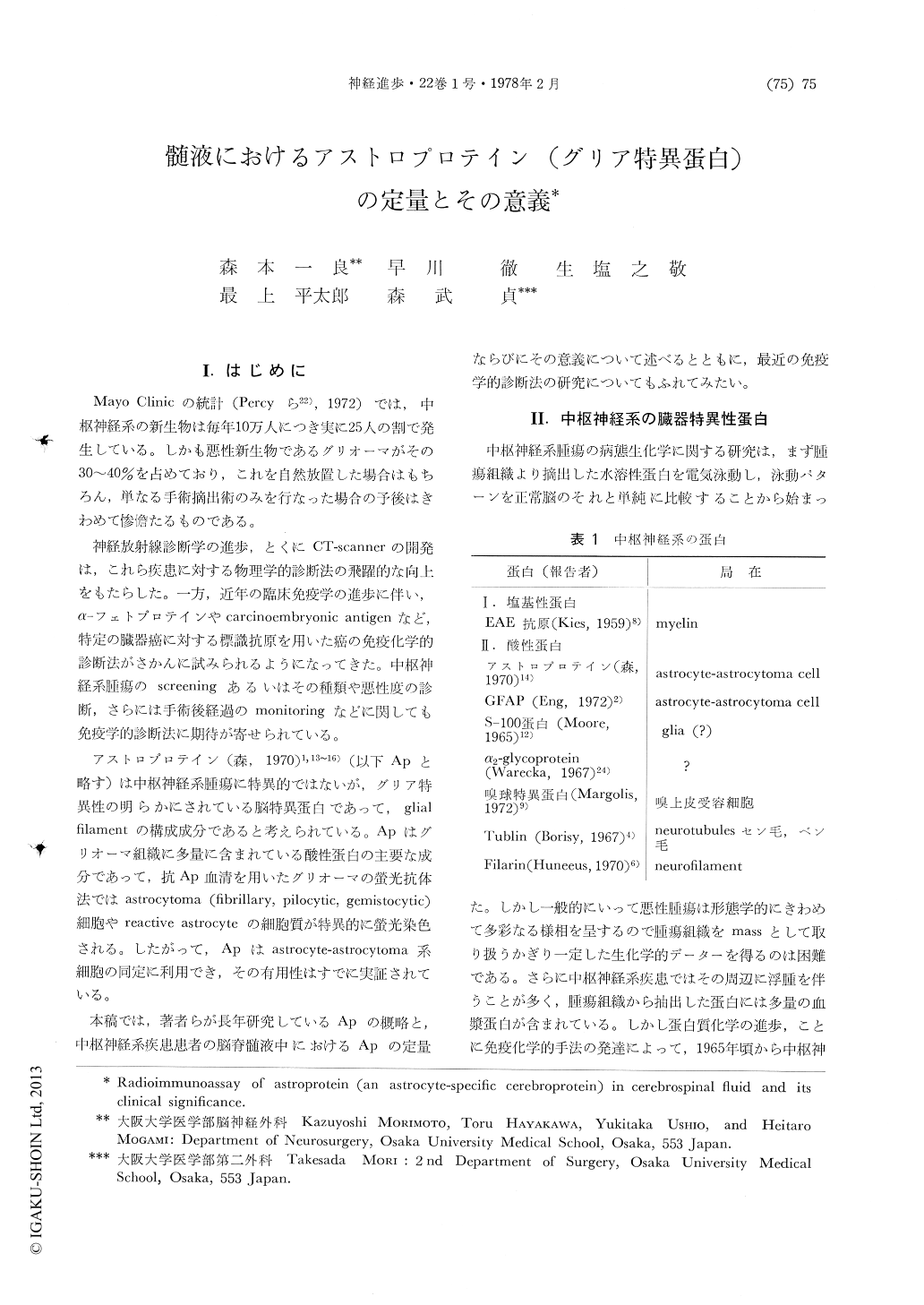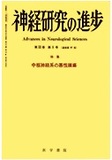Japanese
English
- 有料閲覧
- Abstract 文献概要
- 1ページ目 Look Inside
I.はじめに
Mayo Clinicの統計(Percyら22),1972)では,中枢神経系の新生物は毎年10万人につき実に25人の割で発生している。しかも悪牲新生物であるグリオーマがその30〜40%を占めており,これを自然放置した場合はもちろん,単なる手術摘出術のみを行なった場合の予後はきわめて惨憺たるものである。
神経放射線診断学の進歩,とくにCT-scanncrの開発は,これら疾患に対する物理学的診断法の飛躍的な向上をもたらした。一方,近年の臨床免疫学の進歩に伴い,α-フェトプロテインやcarcinocmbryonic antigenなど,特定の臓器癌に対する標識抗原を用いた癌の免疫化学的診断法がさかんに試みられるようになってきた。中枢神経系腫瘍のscrecningあるいはその種類や悪性度の診断,さらには手術後経過のmonitoringなどに関しても免疫学的診断法に期待が寄せられている。
In 1970, by immunofluorescence technique, Benda, Mori and Sweet demonstrated an unknown acidic cerebroprotein of fraction 10B (Bogoch) from a brain of Tay-Sachs' disease localized inglial cells in human glioma. Subsequently Mori (1970) confirmed this particular cerebroprotein to be specific to fibrillary astrocytes in normal brain as well as to astrocytoma cells in glioma, either human or rodent, and designated it as "astroprotein". Astroprotein has been proven to be identical to GFA protein, which was extracted later by Eng (1972) from gliosed brain tissues.

Copyright © 1978, Igaku-Shoin Ltd. All rights reserved.


